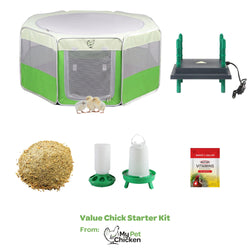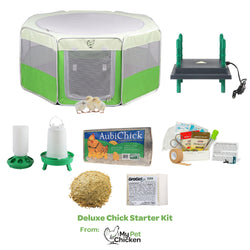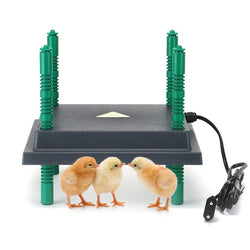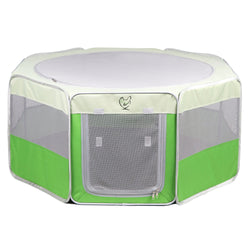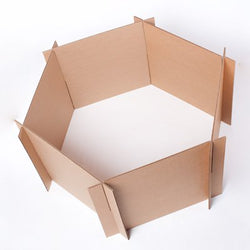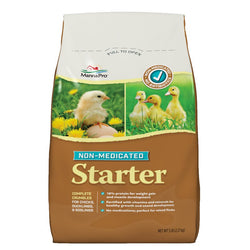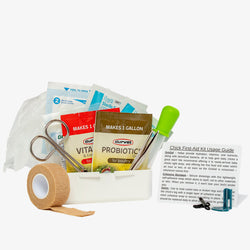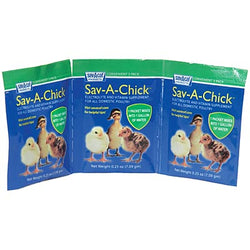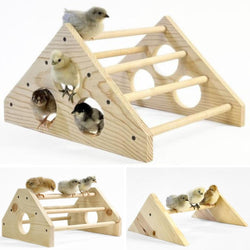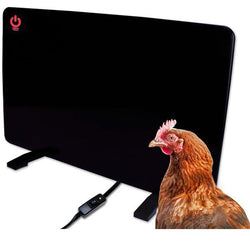How do I tell male and female waterfowl apart?
Back to blog
What exactly do you have--drakes or ducks? Geese or ganders? Great question! The answer may be relatively easy or hard to tell, depending on the age and breed of your birds. Here are some tips to help you determine the sex of ducks and geese, both as babies and when older:
If you purchase your baby waterfowl from My Pet Chicken, you can tell males from females by which leg their breed marking band is on (except on straight run orders, which are not marked for sex). Males will be banded on their right leg, females on the left. As these are rubber bands, they are extremely easy to remove. Just grab the band and pull it down over the foot. For their safety, the bands MUST be removed within the bird's first week of life.

Male ducks (drakes) have a curly feather on their tail.
Sexing Goslings and Ducklings
The only sure way to tell the sex of baby waterfowl is to examine their cloaca (that's a fancy word for "butt"--it may also be caused the "vent"), which is a complicated process not easily communicated in writing. Thankfully, it is easier to vent sex waterfowl than land fowl like chickens, but one should still proceed very carefully. To avoid injuring or even killing baby birds, it is best learned from someone who knows what they're doing and can show you the steps in person. The general idea is this: You must first expose (or "invert") the cloaca using two thumbs and one index finger. If a corkscrew-shaped penis pops out, it is a male. Sounds easy, right? No so much! In newly-hatched birds, the penis is very small and translucent and can be very difficult to see! Having successfully inverted the cloaca, if nothing pops out you have a female (or a male that has been sexed incorrectly).If you purchase your baby waterfowl from My Pet Chicken, you can tell males from females by which leg their breed marking band is on (except on straight run orders, which are not marked for sex). Males will be banded on their right leg, females on the left. As these are rubber bands, they are extremely easy to remove. Just grab the band and pull it down over the foot. For their safety, the bands MUST be removed within the bird's first week of life.
Sexing Adult Ducks
- By voice - This is fairly easy. By five to eight weeks of age, the males have a deep, raspy call, which is like a whispered "wongh" type of sound. The females have the typical, loud "QUACK."
- By plumage - Male ducks develop a curly feather (or several) on their tails. If you see a curly feather, it is a male. If there is no feather, it is either a female or a male that lost his curly feather. Males of the Rouen, Mallard, and Welsh Harlequin breeds also develop the green head and colorful wings by about 15 weeks of age. Until that age, they all look like females.

Male ducks (drakes) have a curly feather on their tail.
- By bill color - This doesn't work for all breeds, but in wild-colored breeds like Gray Calls, Rouen, and Mallards, the drake's bill is dull green by six weeks of age, and females' bills are normally dark brown and orange. Females in most other colored varieties have a darker bill than males by five to eight weeks of age. Determining sex by bill color in crossbreeds is not reliable, since different-colored bills may just reflect differing genetics and not sex.
- By egg laying - It may seem obvious, but just for good measure, the final way to determine the sex is this: if you see them lay an egg, it's a female!
Sexing Adult Geese
- By color - Sexing adult geese is more difficult as there are no definitive, obvious differences between males and females. Pilgrims are the one exception to that rule, however. As babies, Pilgrim males are yellow and light gray with lighter colored bills and feet, and the day-old female's down is a deeper gray/green with a darker bill and feet.
- By size, sound, and behavior - Ganders are typically larger and have more shrill voices than females. They also seem to walk around appearing a bit more cocky with their chest stuck out, especially when challenged. Males are typically larger, with thicker necks and bigger heads. And during the breeding season, they are more protective of their female mates by standing with their neck extended between the intruder and their mate.
- By vent anatomy - By about January of the year following their hatch, you can often vent sex the adults. It is difficult to do before this time as the penis is very small before sexual maturity. But once it matures, it goes from the size of a pencil lead to a spiral corkscrew of a pencil's diameter, with barbs! The difficulty arises when attempting to open the vent sufficiently in an adult in order to make the penis pop out. Their sphincter muscles are pretty strong. Turn the bird over and use your forefinger and thumb to pull open and press the vent. You just have to practice until you can do it, but only try for about 45 seconds on a bird before going on to the next one. They learn to clamp down and you will never be able to expose the penis after about 45 seconds of trying. Try that bird again tomorrow!

